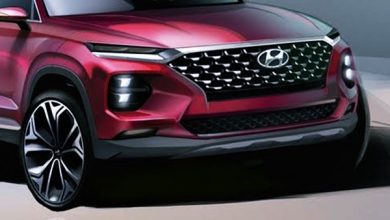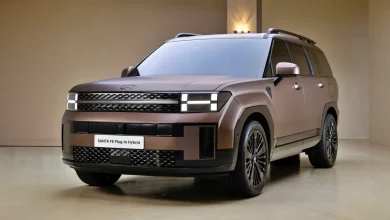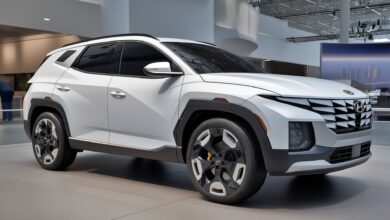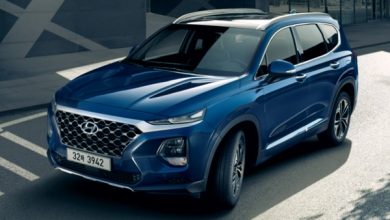First Look: What’s Coming For The 2026 Hyundai Santa Fe Hybrid?
2026 Hyundai Santa Fe Hybrid
The automotive landscape is constantly shifting, but few recent transformations have been as visually dramatic as the Hyundai Santa Fe’s.
Shedding its familiar curves for a strikingly rectilinear form, the latest generation Santa Fe (which debuted for the 2024 model year) didn’t just get a new suit; it fundamentally changed its mission brief.
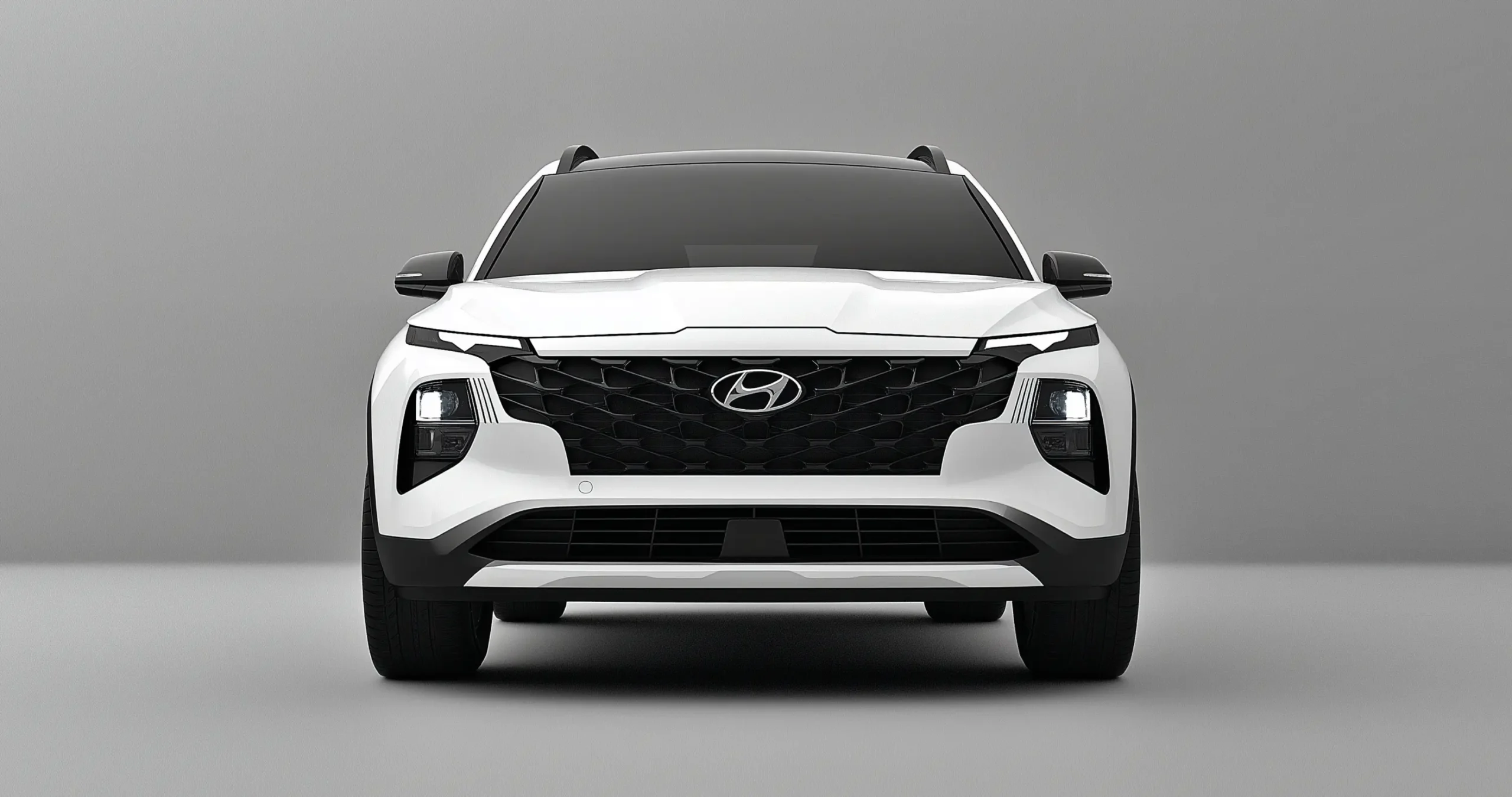
Now bigger, bolder, and packing a standard third row, it muscles further into the competitive family SUV arena.
Among its variations, the Hyundai Santa Fe Hybrid stands out, promising a blend of this newfound space and utility with enhanced fuel efficiency.
As we look ahead, anticipating the refinements and carryovers likely for the 2026 Hyundai Santa Fe Hybrid, it’s crucial to dive into what makes the current iteration tick, drawing from collective reviews and real-world impressions. Is this electrified box truly the efficiency-minded family hauler it aims to be?
Design
Let’s address the elephant – or perhaps, the stylishly angular container – in the room. The Santa Fe’s design is polarizing.
Reviewers consistently note this bold departure. Where previous Santa Fe blended in, this one makes a statement.
Whether that statement resonates positively is subjective, but few can deny its distinctiveness in a sea of swoopy crossovers.
This design isn’t just aesthetic, though. The boxy shape pays dividends inside, particularly concerning cargo volume and headroom, a point universally praised in Hyundai Santa Fe Hybrid reviews.
The extended wheelbase and overall length solidify its three-row credentials, moving it away from the outgoing model’s optional, tight third row into a standard, more usable configuration (though still best suited for kids or short trips for adults, a common critique in this class).
Looking towards a potential 2026 Hyundai Santa Fe Hybrid, significant design changes are unlikely this early in the lifecycle.
Expect minor tweaks at most – perhaps new wheel designs, color palettes, or subtle trim adjustments. The core architectural boldness is here to stay for the medium term.
The Hybrid Heartbeat: Performance and Efficiency Balance
Under the sculpted hood, the Santa Fe Hybrid employs a familiar yet effective powertrain: a 1.6-liter turbocharged four-cylinder engine paired with an electric motor.
This combination delivers a respectable (estimated) 232 horsepower and 271 lb-ft of torque, channeled through a 6-speed automatic transmission. Both front-wheel drive (FWD) and HTRAC all-wheel drive (AWD) configurations are typically available.
How does it drive? Most reviews highlight the hybrid system’s smoothness, particularly in urban environments and during initial acceleration where the electric motor provides instant torque.
The transitions between electric and gasoline power are generally seamless, contributing to a refined driving experience around town.
However, push the Santa Fe Hybrid hard – think highway merging or steep climbs with a full load – and some reviewers note the 1.6-liter engine can feel and sound strained.
It gets the job done, but it lacks the effortless punch found in some rivals with larger displacement engines or more potent hybrid setups. It’s competent, not exhilarating, which is arguably appropriate for a family-focused SUV.
Fuel economy is, naturally, a key selling point. While official EPA figures for a specific 2026 model are far off, the current generation hybrid aims for figures significantly better than its non-hybrid counterpart, often landing in the low-to-mid 30s MPG combined range.
Reviews generally confirm these figures are achievable in real-world driving, making it a compelling option for buyers prioritizing lower running costs.
It might not lead the absolute hybrid efficiency charts (especially compared to smaller vehicles or non-turbo setups like Toyota’s), but for a vehicle of its size and utility, it represents a solid efficiency gain.
We anticipate the 2026 Hyundai Santa Fe Hybrid will carry over this powertrain largely unchanged, perhaps with minor software calibration tweaks for refinement or efficiency.
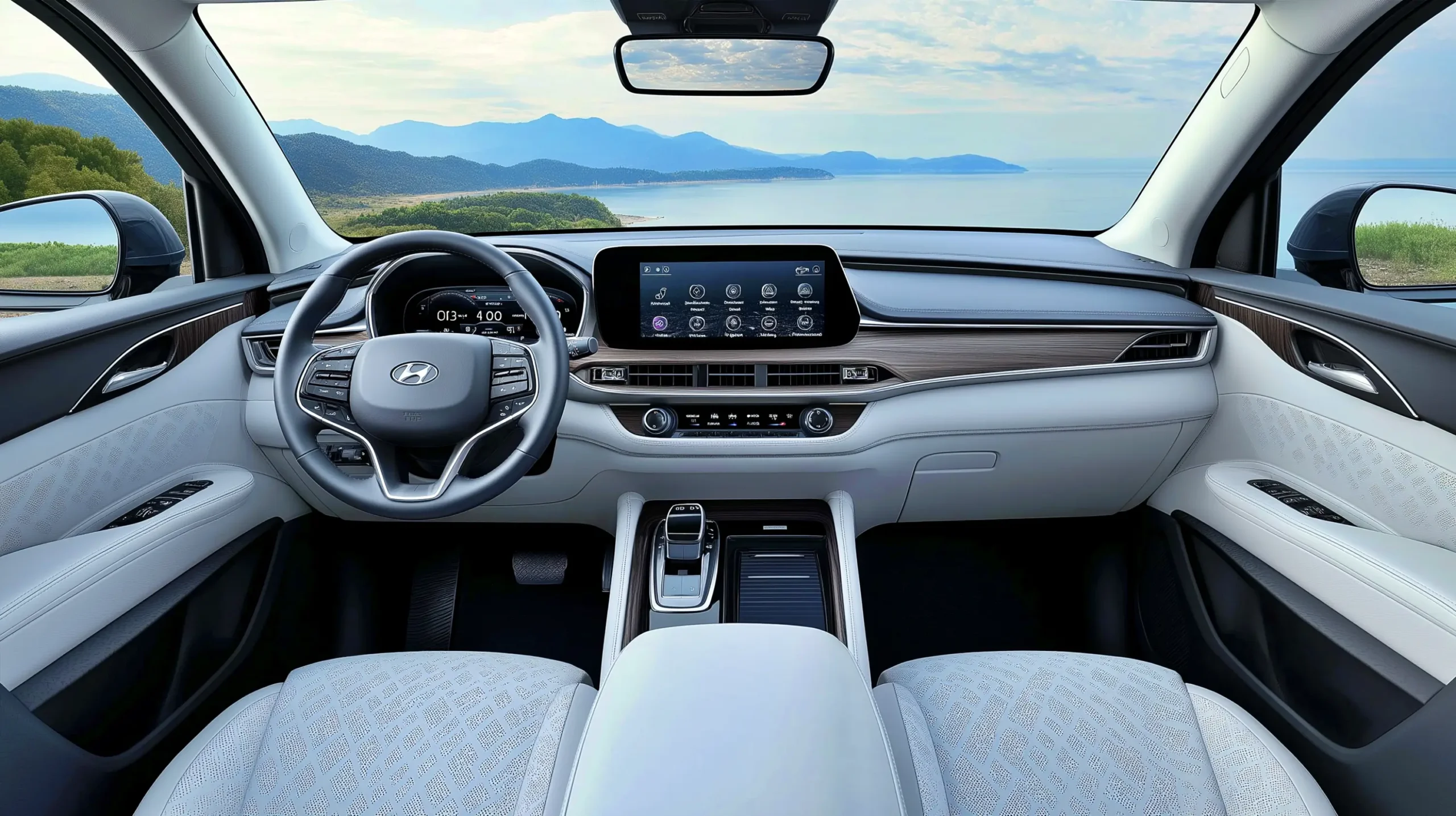
Inside Story: A Tech-Laden, Practical Sanctuary
Step inside, and the Santa Fe Hybrid continues its modern transformation. Dominating the dashboard is an available panoramic curved display, seamlessly integrating a digital instrument cluster and a large central infotainment touchscreen (often twin 12.3-inch screens on higher trims). This creates a high-tech, driver-centric environment.
Reviewers frequently praise the interior’s perceived quality, logical layout, and abundance of clever features.
Hyundai excels at integrating practical touches: ample storage cubbies, numerous USB-C ports throughout the cabin, available wireless charging, and even niche features like a UV-C sterilization compartment in the glovebox on some trims.
Space and versatility are major strengths. The first and second rows offer generous room and comfort.
The standard third row, while a significant improvement over the previous generation’s optional setup, remains best for children or occasional adult use, a common characteristic shared by competitors like the Kia Sorento Hybrid. The real win, thanks to the boxy exterior, is cargo space.
Even with the third row in place, there’s usable luggage room, and folding the seats flat opens up a cavernous, easily accessible load bay – a boon for families and gear-heavy adventures.
The infotainment system is generally lauded for its responsiveness and feature set, typically including wireless Apple CarPlay and Android Auto (a huge plus).
Hyundai’s SmartSense suite of driver-assistance features is comprehensive, offering adaptive cruise control, lane-keeping assist, blind-spot monitoring, and more, often as standard equipment.
This focus on tech and safety is a cornerstone of Hyundai’s value proposition and is expected to continue, perhaps with software updates and potentially more advanced features filtering down from premium models, in the 2026 Hyundai Santa Fe Hybrid.
On the Road: Comfort and Composure
The Santa Fe Hybrid is tuned for comfort, soaking up most road imperfections competently. The ride is generally smooth and quiet, making it an agreeable long-distance cruiser.
However, some reviews mention that models equipped with larger wheels (e.g., 20-inch or larger) can transmit more harshness from bumps and potholes, feeling a bit firm over broken pavement.
Handling is secure and predictable, but don’t expect sporty engagement. The steering is light and accurate enough for easy maneuvering, but it lacks feedback. Body roll is reasonably well-controlled for a vehicle of its size and height.
It feels planted and safe, prioritizing passenger comfort and ease of use over dynamic thrills – exactly what most buyers in this segment are looking for.
Noise insulation is generally good, with the hybrid powertrain operating quietly most of the time, though engine noise becomes noticeable under harder acceleration, as previously mentioned.
The Verdict & Look Ahead (2026)
Synthesizing the reviews, the current Hyundai Santa Fe Hybrid emerges as a compelling, if not perfect, family SUV.
Pros:
- Bold, distinctive styling (subjective, but memorable)
- Spacious and highly practical interior with standard third-row
- Excellent cargo capacity thanks to the boxy design
- Tech-rich cabin with user-friendly infotainment
- Smooth hybrid operation in typical driving
- Solid fuel economy improvement over the gas model
- Strong value proposition with generous features
Cons:
- Polarizing exterior design may not appeal to all
- Hybrid powertrain can feel strained under heavy load
- The third row remains tight for adults
- The ride can be firm on larger wheels
- Fuel economy, while good, doesn’t top the class leaders
Compared to rivals like the Toyota Highlander Hybrid (known for stellar MPG and reliability) and its corporate cousin, the Kia Sorento Hybrid (offering similar tech in a slightly different package), the Santa Fe Hybrid distinguishes itself with its daring design and arguably superior cargo flexibility due to its shape.
Looking towards the 2026 Hyundai Santa Fe Hybrid, expect it to be largely an evolution of the current successful formula.
Barring an unforeseen early refresh, the powertrain, core design, and interior layout will likely remain. Potential updates could include refined software for the infotainment and driver aids, possible adjustments to trim structures or standard equipment, and maybe new connectivity features.
Ultimately, the Hyundai Santa Fe Hybrid (in its current form and likely extending to the 2026 model) is a strong contender for families seeking a spacious, tech-forward, and reasonably efficient three-row SUV who aren’t afraid of making a design statement.
It prioritizes practicality, comfort, and value, wrapped in a package that refuses to blend into the background. If the bold looks appeal and the slight powertrain compromises aren’t deal-breakers, it warrants serious consideration.
Release Date and Pricing
- Release Date: Not officially confirmed, but expect it in late summer/fall 2025.
- Price: Not officially confirmed. Expect it to be announced closer to the release date, likely starting slightly higher than the 2025 model’s base price (which is currently around $38k-$39k for the SEL trim).
Keep an eye on automotive news sites and Hyundai’s official channels in the coming months (especially summer 2025) for concrete announcements regarding the 2026 Santa Fe Hybrid.


